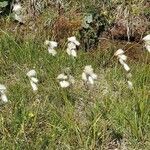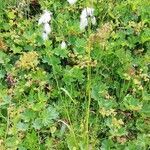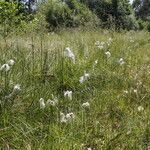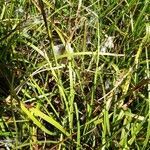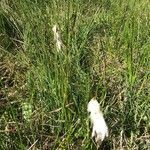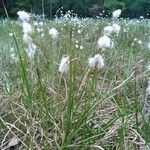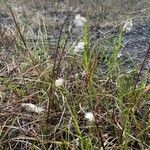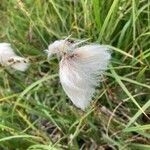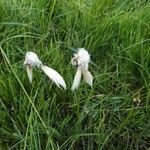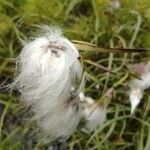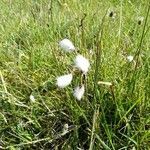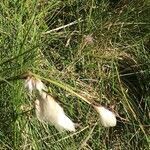Extensively colonial from creeping rhizomes; stems subterete, 2–6(–9) dm; sheaths with a dark border at the top; blades ± flat for most of their length, 2–8 mm wide, the uppermost one mostly as long as or longer than its sheath; invol bracts unequal, 2 or 3 foliaceous, the longest one equaling or generally surpassing the infl; spikelets 3–several, on compressed, smooth or minutely scabrous-hirtellous pedicels to 5 cm; scales tawny to drab or blackish-green, lance-ovate, with a slender midvein not extending to the very thin, hyaline-scarious tip; bristles white; anthers 2–4.5 mm; achene blackish, rather narrowly obovate, 2–3 mm, 2–3 times as long as wide; 2n=58, 60. Bogs and marshes; circumboreal, s. to Me., N.Y., Mich., Io., Colo., N.M., and Oreg. Fr June–Aug. (E. polystachion, a rejected name)
Plants colonial from long-creeping rhizomes. Culms to 100 cm × (0.8–)1–1.2 mm distally. Leaves: blades flat, tip trigonous, channeled in cross section, to 40 cm × 1.5–6(–8) mm; distal leaf blade much longer than sheath. Inflorescences: blade-bearing involucral bracts 1–3, proximally blade, often sheath black, leaflike, longest 1–12 cm. Spikelets (1–)2–10, in subumbels, patent or pendent, ovoid, 10–20 mm in flower, 20–50 mm in fruit; peduncles 5–60 mm, smooth or scabrous; scales lanceolate or ovate, 5–10 mm, with prominent midrib fading proximal to tip, apex ± acute; proximal scales without lateral ribs. Flowers: perianth bristles 10 or more, white or pale yellow brown, 15–30 mm, smooth; anthers 2–5 mm. Achenes black, oblanceoloid, 2–5 mm.
A grass like herb. It does not occur in tufts. It has a creeping rootstock. The leaves are flat and keeled. It produces tassels and white cotton-like flowers. These are on short stems 30 cm long and which do not have leaves. They droop from the base of leaf-like bracts.
